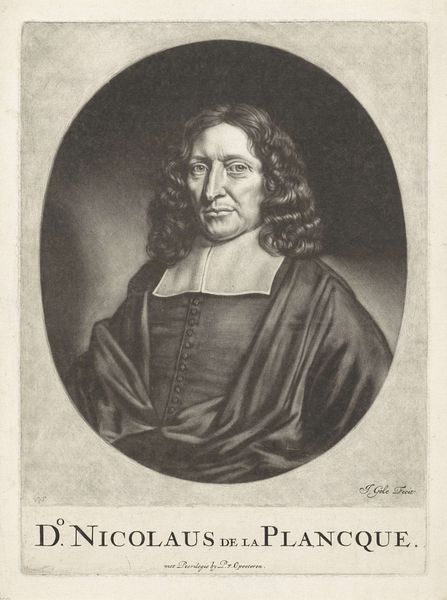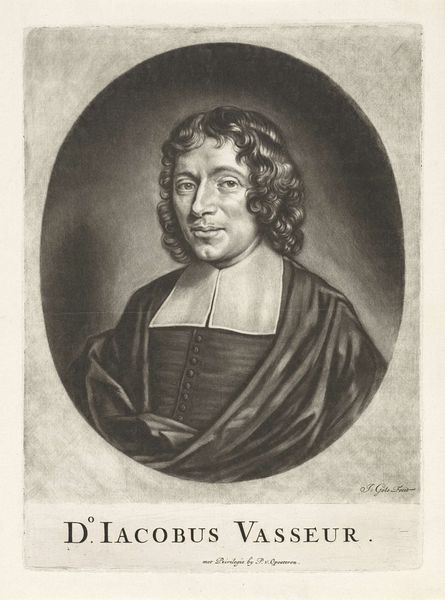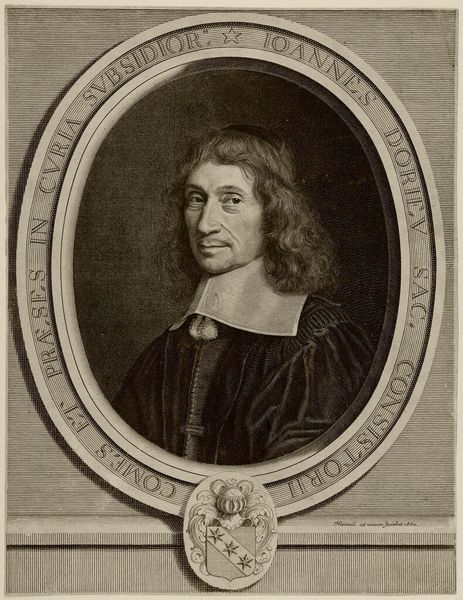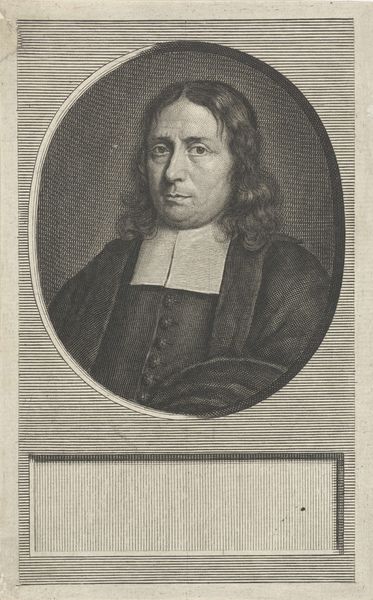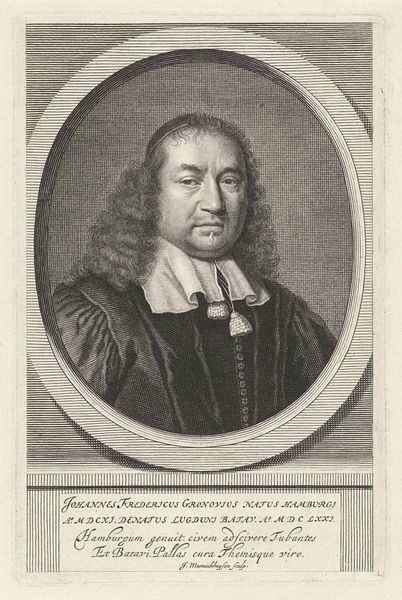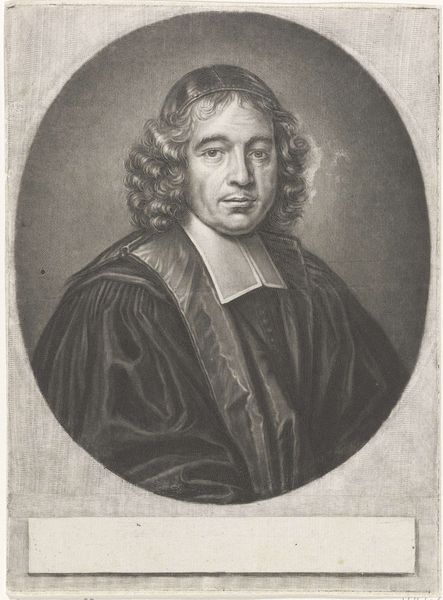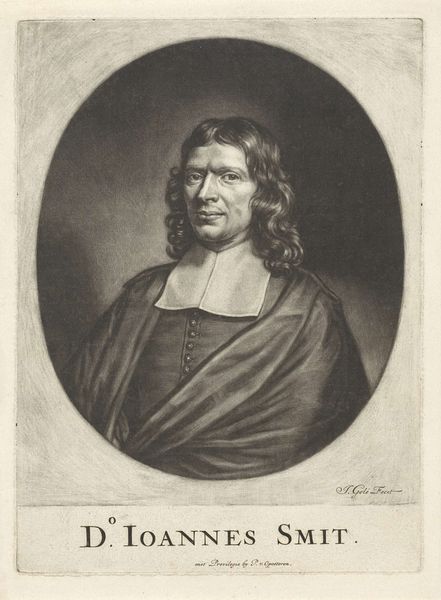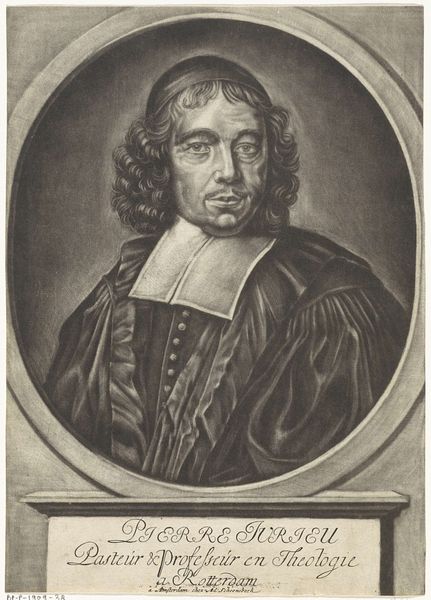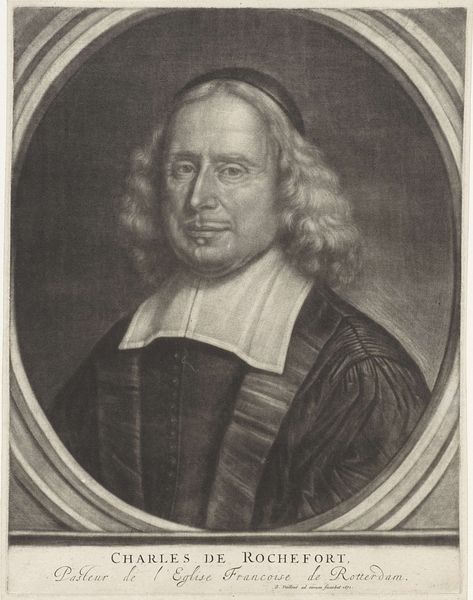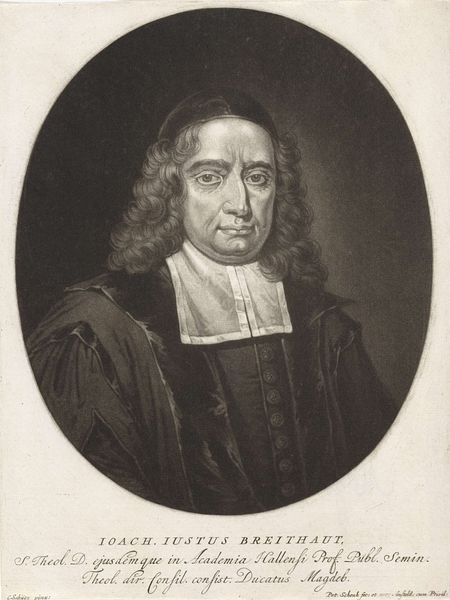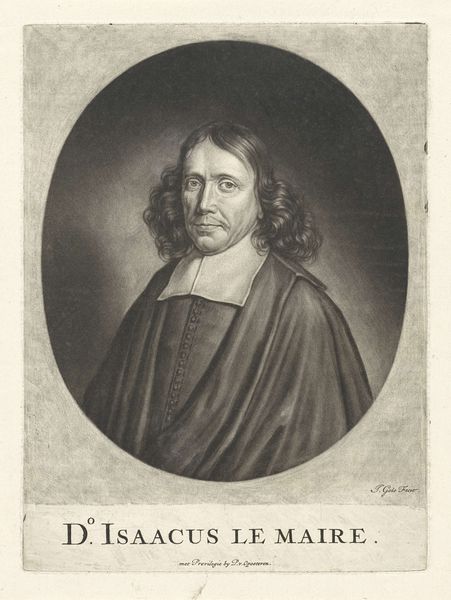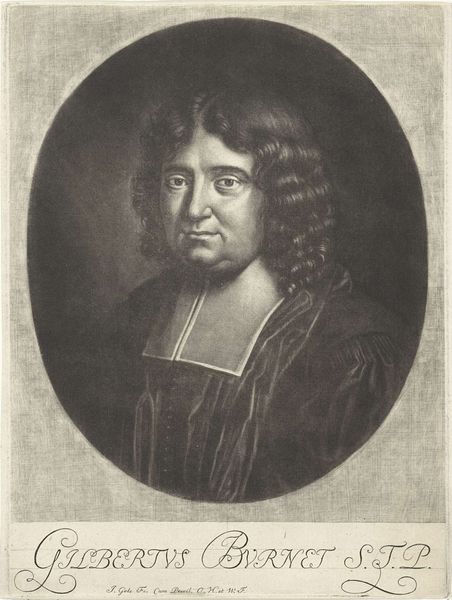
print, engraving
#
portrait
#
baroque
#
dutch-golden-age
# print
#
charcoal drawing
#
portrait drawing
#
engraving
Dimensions: height 290 mm, width 211 mm
Copyright: Rijks Museum: Open Domain
Curator: The somber tonality initially strikes me. It is a quite serious presentation. Editor: Indeed. We're looking at "Portret van Bernardus Homoet," an engraving dating back to the late 17th century, between 1675 and 1699, by Jacob Gole. It resides here at the Rijksmuseum. What intrigues me is the subject’s rather self-satisfied gaze amidst the darkness. Curator: It's all about that chiaroscuro, isn't it? Gole expertly plays with light and shadow to model Homoet's face. See how the light catches his forehead and nose, drawing our eyes there, while the rest is almost receding? Editor: And the collar! It's stark. I’m also thinking about the technical craft of engraving. All those deliberate, etched lines to create tonal variation and texture… labor intensive! And each print slightly different as the plate wears. It reveals something of the conditions of image production in the Dutch Golden Age. Curator: I agree that the contrast offered by that precise, thin white collar emphasizes the formal gravity. This portrait is a masterclass in Baroque compositional techniques. Note how the oval framing focuses our gaze intently on Homoet’s likeness. Editor: But was Gole an established artist? These prints were commercial endeavors, multiples circulating amongst the populace. Who bought them? Did the artist sign off on the final version? All these aspects impact our appreciation of it, as an image. Curator: Undoubtedly so. The details speak of affluence: look at his garments and overall demeanor, all of it signifying the subject’s social status, meticulously reproduced through artistic convention. I appreciate the way in which a work like this can serve to convey an aura of importance through careful choices in presentation. Editor: Well, I am left pondering the social and economic framework which allowed such images to circulate and to shape the visibility, and the legacy, of figures like Bernardus Homoet. It makes you wonder about who and what we immortalize. Curator: For me, the pure formal construction—the perfect interplay of light, shape and form is most evocative, the ultimate essence of portraiture itself.
Comments
No comments
Be the first to comment and join the conversation on the ultimate creative platform.
